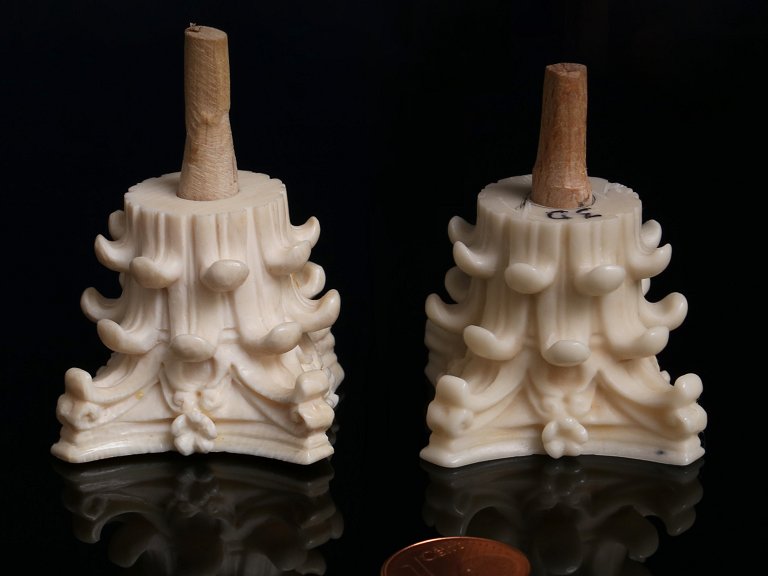Digory: The 3D substitute for Ivory

For ages, humans have been using ivory to make art objects. But its source is an environmental issue. As ivory is obtained from the tusks (continuously growing front teeth that protrude well beyond the mouth of certain mammal species, traditionally elephants) and from other animal’s teeth, it has led to a widespread animal slaughter. As a consequence, the ivory trade was banned internationally in 1989.
Nevertheless, the material still has a high demand, due to being used to restore old art objects or make new ones with the same look and feel as the old ones were. But, as the trade of ivory was banned, people have been searching for a substitute. Many materials have already been used to try to replace ivory, such as bones, shells and plastic. But the results in each one can vary a lot.
The search may be over. Researchers from the Vienna University of Technology (TU Wien) have partnered with a 3D printing company named Cubicure Gmbh, with the cooperation from the Archdiocese of Vienna’s Department for the Care of Art and Monuments and Addison Restoration, and they developed a new high-tech material that could be used to substitute the old ivory, the “Digory”.
The Motivation
The proposition to search for a substitute for ivory came from a church in Mauerbach.
“The research project began with a valuable 17th-century state casket in the parish church of Mauerbach,” says Prof. Jürgen Stampfl from the Institute of Materials Science and Technology at TU Wien. “It is decorated with small ivory ornaments, some of which have been lost over time. The question was whether they could be replaced with 3D printing technology.”
The research team already had experience in the area – they worked with ceramic materials for dental technology. But, obviously, it was a whole new challenge to accept and develop a substitute for ivory : “We had to fulfill a whole range of requirements at the same time,” says Thaddäa Rath, who worked on the project as part of her dissertation. “The material should not only look like ivory, the strength and stiffness must also be right, and the material should be machinable.”
The Perfect Mix
After numerous experiments, the group succeeded in finding the perfect mix of everything: Tiny calcium phosphate particles with an average diameter of about 7 µm were embedded in a special resin, together with extremely fine silicon oxide powder. The mixture is then processed at high heat in Cubicure’s 3D printers using the hot lithography process: Layer by layer, the material is cured with a UV laser until the complete object is finished.
“You also have to bear in mind that ivory is translucent,” explains Thaddäa Rath. “Only if you use the right amount of calcium phosphate will the material have the same translucent properties as ivory.” Afterwards, the colour of the object can be touched up — the team achieved good results with black tea. The characteristic dark lines that normally run through ivory can also be applied afterwards with high precision.
Being More Than Ivory
In terms of the field of restoration, the new material “Digory” opens a whole new world for the finest details in old art objects. With the 3D printing technology, it is not only extremely easy but also faster to restore and reproduce the finest details in the printed piece. What would take days to carve in real ivory, will be replaced by only a few hours of printing “Digory”.
“With our specially developed 3D printing systems, we process different material formulations for completely different areas of application, but this project was also something new for us,” says Konstanze Seidler from Cubicure. “In any case, it is further proof of how diverse the possible applications of stereolithography are.”
The research group hopes that eventually, Digory will take place in our cities and art monuments, being something natural and beautiful to all, with no tusks or teeth being removed from dead animals.

Author: Bernardo Andrade
Sources:
Thaddäa Rath, Otmar Martl, Bernhard Steyrer, Konstanze Seidler, Richard Addison, Elena Holzhausen, Jürgen Stampfl. Developing an ivory-like material for stereolithography-based additive manufacturing. Applied Materials Today, 2021; 23: 101016 DOI: 10.1016/j.apmt.2021.101016
Science Daily
Canadian Plastics
Inovação Tecnológica